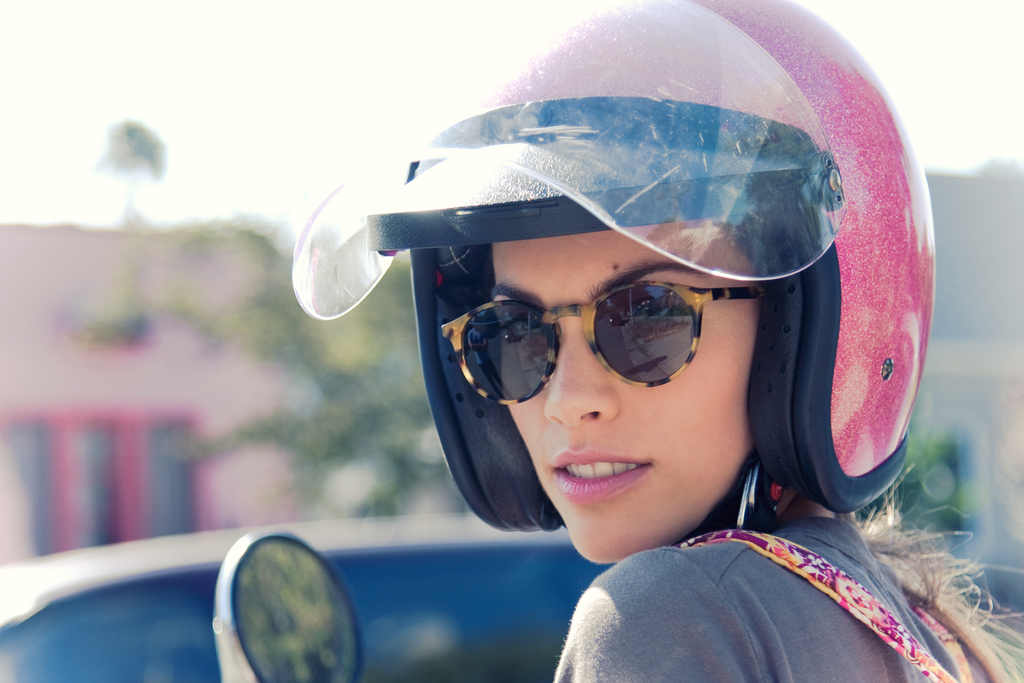
Image: Guise Archives
Many of us consider our eyes as the most cherished parts of our bodies. Without our sense of vision, we won’t be able to appreciate the beauty around us and function optimally everyday. But we are potentially exposing our eyes to danger simply by staying outdoors unprotected.
How the Sun Damages Our Eyes
There are certain types of light from the sun that can cause eye damage. Ultraviolet A (UVA) and ultraviolet B (UVB) are among them. They are invisible yet powerful rays that have wavelengths that are shorter than visible light. Constant and prolonged eye exposure to UVA and UVB increases your risk of developing macular degeneration (a major cause of vision loss for people over the age of 60), cataracts, and cancer.
Macular Degeneration
Macular degeneration is an eye condition that’s often associated with age. However, this condition is now believed to be caused by cumulative damage to the eye’s retina.
In the U.S., macular degeneration is the leading cause of vision loss for people over the age of 60. Some studies have shown that this has something to do with UVA and HEV (high-energy visible) light exposure.
Cataract
Cataract is the most common cause of treatable blindness. It refers to the progressive clouding and yellowing of the eye’s crystalline lens. It is estimated that about 10 percent of cataract cases are brought about by UV exposure.
Cancer
Eyelid cancer accounts for 5 to 10 percent of skin cancer cases. Many types of eyelid cancer occur on the lower lid as it’s the part that receives the most sun exposure. Basal cell carcinoma and squamous cell carcinoma are the most common types of eyelid cancer. They are usually found in individuals with a long history of sun exposure. Melanoma, which accounts for 5 to 10 percent of skin cancer cases, is more common in those with intermittent but intense sun exposure.
Unprotected exposure to UV rays can also lead to premature signs of skin aging such as wrinkles and fine lines around the eyes.
Aside from eyelid cancer, other types of cancer that can develop as a result of UV exposure include intraocular melanoma and conjunctival cancer.
Protecting Your Eyes
The longer you are exposed to the solar radiation, the greater is the risk of developing these eye conditions later in life. Hence, it’s important to have some form of protection if you’re heading outdoors. A good way to protect your eyes from these harmful UV rays is by wearing quality sunglasses.
Choosing the Right Sunglasses
Here are some tips on how to choose the right sunglasses that can provide your eyes with adequate protection from the UV rays:
- UV Protection
Not all sunglasses are created the same. If you want to provide adequate protection for your eyes, you would want to pick a pair of sunglasses that offer UV protection. They should be able to block out 99 to 100 percent of UVA and UVB radiation. If they don’t, then it’s best to leave them on the rack.
- The Right Lens
There are different kinds of lens available around. There are blue blockers, polarized, mirror-coated, gradient, double gradient, and photochromic lenses.
As its name implies, the blue blockers are the types of lenses that block the blue light. Some studies show that blue light can be harmful and can increase one’s risk of suffering from eye damage. These lenses are often preferred by boaters, skiers, and pilots.
Polarized lenses are popular among those who play water and snow sports. They come with anti-reflecting coatings that reduce the glare caused by light reflection.
Mirror-coated lenses are the types that limit the amount of light entering the eyes. The highly-reflective coatings on their front surface make them highly beneficial for those who spend a lot of time outdoors, in very bright conditions.
Gradient lenses are ideal to use for driving. Since these lenses are tinted from the top down, they shield the eyes from the overhead light while allowing more light to get through the bottom half. This allows you to see the dashboard clearly.
Like the gradient lenses, the double gradient lenses are also tinted from the bottom up. They are the go-to lenses if you want sunglasses that aren’t too dark but still able to shield your eyes from overhead sunlight.
Photochromic lenses are the type of lenses that adjust their level of darkness based on the amount of UV light you are exposed to.
- Fit
The fit is another thing to consider when choosing a pair of sunglasses. You don’t want to wear something that doesn’t fit your face well as you only let UV rays seep into your skin and eyes.
A good pair of sunglasses is one that wraps around your eyes, blocking the stray of UV light. Good-fitting sunglasses can also protect your eyes from sand and allergens.
Some people may consider sunglasses as just another accessory to complete their look, but this simple accessory can provide your eyes with protection that you’ll be thankful for in the long run.